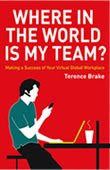 I wasn’t going to post about Steve Jobs, but one of the things I did over the Thanksgiving holiday was to read SJ’s biography written by Walter Isaacson. I doubted it could maintain my interest for very long – especially as I was reading it as an e-book which is not my preferred way, and because I never really liked the Job's persona – but it did. It was a compelling read. Jobs was a complex person who could drive people to fury and despair while also being wonderfully energizing and inspirational. The lives of complex people always make for good reading –at least for me - because they take you onto the battlefield where internal, interpersonal, and external forces engage in a dramatic fight for dominance.
I wasn’t going to post about Steve Jobs, but one of the things I did over the Thanksgiving holiday was to read SJ’s biography written by Walter Isaacson. I doubted it could maintain my interest for very long – especially as I was reading it as an e-book which is not my preferred way, and because I never really liked the Job's persona – but it did. It was a compelling read. Jobs was a complex person who could drive people to fury and despair while also being wonderfully energizing and inspirational. The lives of complex people always make for good reading –at least for me - because they take you onto the battlefield where internal, interpersonal, and external forces engage in a dramatic fight for dominance. There is no doubt that Jobs was an arrogant, highly-charged, controlling, and narcissistic perfectionist who could be abusive, even cruel. According to Isaacson, “The nasty edge to his personality was not necessary. It hindered him more than it helped him,” although he did get people to do things they never dreamed possible. Through the force of his will and playing by his own rules (what others called his ‘reality distortion field’) he would make things happen – not by his own ability to invent, but by the attractiveness of his vision, and his mastery “at putting together ideas, art, and technology in ways that invented the future.” Here are a few of my takeaways from the book:
Collaboration: Job’s didn’t organize Apple into semi-autonomous divisions – a mistake made by companies like Sony, AOL, and Time-Warner. Instead, he closely controlled his teams and “pushed them to work as one cohesive and flexible company" with one profit-and-loss bottom line for them all. He was most fond of face-to-face meetings where ideas could be tossed around, but he was always in ultimate control. His product launches were well known for their presentations, but in everyday meetings, he hated Powerpoint slides. His argument was that if you needed slides in a meeting, you didn’t know what you were talking about.
Perfectionism: SJs adoptive father had taught him the importance of craftsmanship; to drive for perfection even with the look of parts unseen by users e.g., the circuit board. Jobs not only brought a powerful and engaging vision to the company, but also an obsessive eye for detail. One of his early mentors, Mark Makkula, had persuaded him that people do judge a book by its cover and so he gave a laser-sharp focus to the user experience. Colors, materials, shapes, and textures needed to convey creativity and professionalism. He might become best known for his contributions to product design.
Product: Jobs was a product man. He said many times that he wasn’t interested in profit and wealth per se (although he could be somewhat contradictory on that score). Profits were good because they enabled you to develop more outstanding products. He accused John Scully (who was recruited by Jobs in 1983 to be CEO) of putting profit before product. Macintosh lost to Microsoft,” he said “because Scully insisted on milking all the profits he could get rather than improving the product and making it affordable.”
Intuition: “I never rely on market research,” said Jobs. What was important was an intimate connection with the feelings of the customer. His talent was for imaginative leaps rather than extensive information gathering and mental processing. He didn’t believe in giving customers what they wanted. What resonated with him was Henry Ford’s view that if had asked customer’s what kind of car they wanted they would have said a faster horse.
Simplicity: He had been a student of Zen Buddhism, and he loved the Zen gardens in Kyoto. Zen minimalism led him to aggressively cut out anything from a product that was non-essential, even though this could be extremely challenging for Apple engineers. But the simplicity he was after came from understanding and conquering the complexities, not ignoring them. Simplicity is very hard work.
Breadth: Jobs wasn’t narrow in his interests. Religion, art, music, design and technology all played a part in shaping his vision. He said, “I like living at the intersection of humanities and technology.“
Focus: When he returned to Apple – 10 years after being pushed out – Jobs cut 70% of Apple products. In one meeting he drew a box on a whiteboard and divided it into four quadrants. He labeled the two columns Consumer and Pro, and the two rows Desktop and Portable. He wanted one great product in each quadrant, nothing more.
Continuous Innovation: Jobs was not a person to stand still. He admired artists like Bob Dylan and Picasso who were always re-inventing themselves. One of his rules was never be afraid to cannibalize yourself. Tim Cook (current Apple CEO) said, “If you don’t cannibalize yourself, someone else will . . . So even though an iPhone might cannibalize sales of an iPod, or an iPad might cannibalize sales of a laptop, that did not deter him.”
Integration & Unity: Jobs wanted a tightly packaged of hardware and software. Rather than creating an open system, he decided on a closed system that would provide a seamless and simple user experience. It was a risk, but it paid off:
“Even with a small market share, Apple was able to maintain a huge profit margin while other computer makers were commoditized. In 2010, for example, Apple had just 7% of the revenue in the personal computer market, but it grabbed 35% of the operating profit.
More significantly, in the early 2000s Job’s insistence on end-to-end integration gave Apple an advantage in developing a digital hub strategy, which allowed your desktop computer to link seamlessly with a variety of portable devices.”
Today, when it seems that a decision can’t be made without a metric, I admire Steve Jobs for his imagination, courage and tenacity. In other words, his daring leadership.








